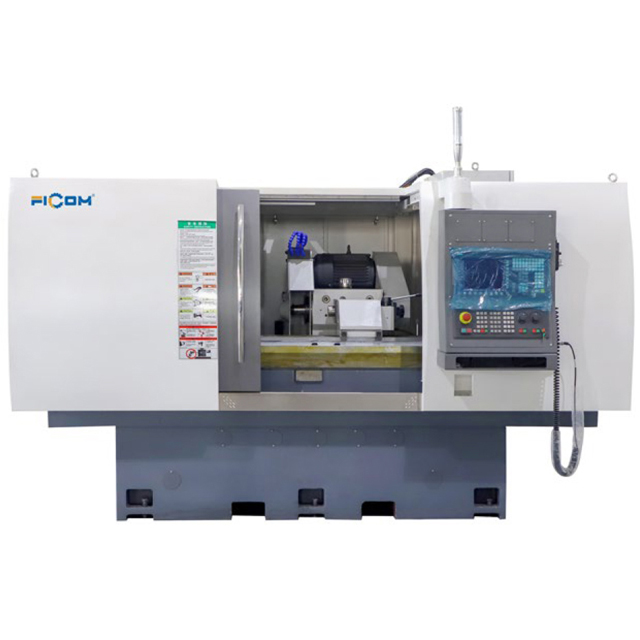Views: 1 Author: JSC Publish Time: 2025-05-06 Origin: Site
Cylindrical grinding machines are essential for achieving high precision and surface finish in metalworking industries. These machines are designed to grind cylindrical, conical, or contoured surfaces with extreme accuracy, ensuring that the workpieces meet strict dimensional tolerances. This article explores the key functionalities, advanced features, and industrial applications of cylindrical grinding machines.

Cylindrical grinding is a subtractive manufacturing process where a rotating workpiece is shaped against a rotating grinding wheel. The workpiece is typically clamped between a headstock and tailstock or held in a chuck. The grinding wheel removes microscopic layers of material, achieving a mirror-like surface finish and precise geometry.
Grinding Wheel – The primary cutting tool that shapes the workpiece.
Workpiece Spindle – Holds and rotates the part during grinding.
Tailstock – Provides additional support for long workpieces.
Hydraulic or CNC Controls – Enables precision adjustments and automation.
Unmatched Precision – Capable of achieving tolerances as low as ±0.0001 inches.
Superior Surface Finish – Ideal for components requiring ultra-smooth surfaces.
Versatile Material Compatibility – Can grind steel, alloys, ceramics, and more.
High Repeatability – Essential for mass production in industries like aerospace and automotive.
Customization Flexibility – CNC-controlled machines allow for complex contour grinding.
Cylindrical grinders play a crucial role in turbine shaft grinding and other high-precision aerospace components that require micron-level accuracy.
Used in manufacturing crankshafts, camshafts, and transmission shafts, ensuring optimal performance and longevity.
Essential for producing high-precision surgical instruments and implant components that demand smooth, burr-free surfaces.
Precision grinding ensures that molds and dies maintain the exact dimensions required for high-accuracy production.
Used for machining external surfaces of a workpiece. Available in manual, CNC, and hydraulic models.
Designed for grinding bore diameters inside components such as bearings and bushings.
Capable of both internal and external grinding, offering versatility for multi-step machining.
Grinding Accuracy – Look for machines with high-precision CNC controls.
Automation Level – CNC models provide higher efficiency and repeatability.
Workpiece Size Compatibility – Ensure the machine accommodates your required workpiece dimensions.
Coolant System – Proper cooling prevents thermal damage and improves surface finish.
Wheel Dressing System – Automatic dressing enhances grinding consistency and reduces downtime.
Regular Wheel Dressing – Keeps the grinding wheel sharp and free from clogging.
Lubrication & Coolant Checks – Prevents overheating and ensures smooth operation.
Alignment Calibration – Ensures precise grinding tolerances.
Machine Cleanliness – Reduces contamination and extends machine lifespan.
1. What is the difference between cylindrical grinding and centerless grinding?
Cylindrical grinding requires a fixture to hold the workpiece, while centerless grinding supports the workpiece on a blade between the grinding wheel and regulating wheel.
2. How does CNC technology improve cylindrical grinding?
CNC controls provide automated precision, allowing for repeatable, high-accuracy grinding with minimal operator intervention.
3. What is the best material for cylindrical grinding wheels?
Common choices include aluminum oxide, silicon carbide, and cubic boron nitride (CBN), depending on the material being ground.
4. Can cylindrical grinding machines handle complex geometries?
Yes, advanced CNC cylindrical grinders can perform multi-axis grinding, allowing for complex shapes and contours to be produced.
5. How do I choose the right cylindrical grinding machine for my application?
Consider accuracy requirements, automation level, material compatibility, and workpiece dimensions to select the best machine for your needs.
Cylindrical grinding machines are essential for precision machining, ensuring high-quality surface finishes and dimensional accuracy across various industries. Whether for automotive, aerospace, or medical applications, investing in the right cylindrical grinding machine enhances productivity, consistency, and cost efficiency.
Call to Action:
Looking for a reliable Cylindrical grinding machine? Contact us today to explore our extensive range of Precision Lathe Reliable Pergormance and find the perfect solution for your production needs.
Phone: +86-13905278551
E-mail: jeff@jscmachinery.com
WhatsApp:+86-13905278551